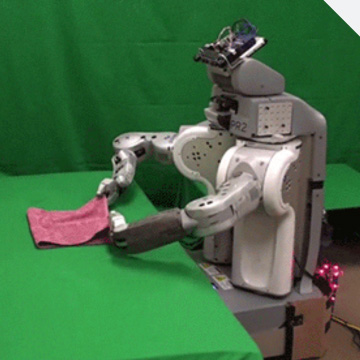
How to Manage Different Personalities in the Workplace
March 18, 2023
The Top 10 Fascinating Facts About Minecraft!
April 11, 2023
Venom 2 Let there be carnage by Lucas Cuenca
Born in Ushuaia, Argentina, which is famously known as one of the southernmost cities in the world and a gateway for boats heading to Antarctica, Lucas Cuenca had a unique childhood. He later moved to Buenos Aires to pursue his passion for multimedia design. During this time, Cuenca watched “The Lord of The Rings” in a theater, which sparked his interest in monsters and creatures.
Cuenca’s passion for the film industry led him to save enough money to travel to New Zealand, where he dreamed of working in the film industry. He admits that he was a little too optimistic, as he initially thought that someone would simply offer him a job, but he remained determined. His perseverance paid off as he worked with various studios in different countries, gaining valuable experience and climbing up the ranks in the film industry.
From Art Department to Iconic Creature Designer
Lucas Cuenca had been in the industry for quite some time before he was able to secure some work with DNEG on two major projects, “Assassin’s Creed” and “Pacific Rim Uprising.” Initially, he joined the Art Department where he worked on Kaijus, perfecting his skills and techniques. Later, he transitioned into the Build Department, where he focused more on Creature Effects, further advancing his career. A renowned creature designer and supervisor and has had an illustrious career in the film industry.
He started off as an artist in the Art Department, where he learned the importance of making everything look amazing. However, he also realized that there was a disconnect between the Art Department and production, where creatures are actors, and need to move and perform accordingly.
Through his experience in the Art Department, Lucas was able to bridge this gap, allowing him to effectively communicate and collaborate with the production team to ensure that the creatures he designed were both visually stunning and functional.
Despite working at the DNEG office in London, Lucas and his wife preferred nature and the outdoors over the city life, so he jumped at the opportunity to transfer to the Vancouver office when it presented itself. As a lead artist, Lucas worked on several projects such as the CG dogs in “Togo” and the mouse in “Dune” before moving on to create the iconic Carnage character. His contributions have been integral to the success of several blockbuster films and cemented his place as one of the industry’s most talented creature designers.

Collaboration key to bringing iconic character Carnage to life on the big screen
Lucas Cuenca understands the value of collaboration and teamwork in the film industry. His recent project, the iconic character of Carnage, was a result of extensive collaboration with other talented professionals such as Sheena Duggal, Mark Breakspear, and Chris McLaughlin.
Sheena Duggal served as the client VFX supervisor for the project, with Mark Breakspear as an additional VFX supervisor, and Chris McLaughlin as the DNEG VFX supervisor. Working together, they were able to bring Carnage to life on the big screen in a truly remarkable way.
Lucas also expressed his admiration for the FX guys who put in a tremendous amount of work on the project. Their expertise and attention to detail brought the character’s gooey slime transformations to life, adding a level of realism that is truly awe-inspiring.
Overall, it is clear that Lucas and his team understand the importance of collaboration and are committed to bringing their collective skills and expertise to bear on every project they undertake.

Unveiling the Intricate Process Behind the Creation of Carnage
The creation of Carnage was a highly intricate and challenging process, involving a wide array of features such as transformations, multiple arms, complex facial expressions, tentacles, muscle simulations, and special effects, which all had to work together seamlessly to bring the character to life.
Every character requires a structure to move and perform believably, including Carnage, whose unique anatomy defies description. Able to transform into water, rock, or any substance in between, the character needed a muscular and skeletal foundation to achieve realism on screen.
As an action figure come to life, Carnage has a complex design featuring 10 to 15 arms and 5 to 10 tentacles extending from his back. The challenge was to make these multiple limb connections hidden from the viewer’s sight, with the ability to switch them according to the shot. Proper topology was crucial to his design, so he was built based on human anatomy, with muscles taking the place of bones. This ensured that the character could move and express himself in a believable way.
The muscle tissues posed a significant challenge as well. For instance, when one sees a scene of Carnage showcasing the connective tissue between his muscles, it’s important to note that the artists drew over three thousand lines in Houdini one by one, which were subsequently simulated in numerous shots.

Learn the Importance of Cross-Departmental Comprehension in VFX Pipeline
Regardless of the position you aspire to in the pipeline, it is crucial to comprehend how all departments operate together. It is essential to understand how assets, rigging, animation, CFX and FX, lighting and comp complement each other.
While you don’t need to be an expert in every area, you must understand the sequence of events. Fortunately, I began my career in the art department and progressed through various areas, providing me with a solid comprehension of the creature development process.
The contents of this article were originally disseminated by Michael Maher, and all of the original content is exclusively owned by Michael Maher Filmmaker/Writer – Denton, Texas.





